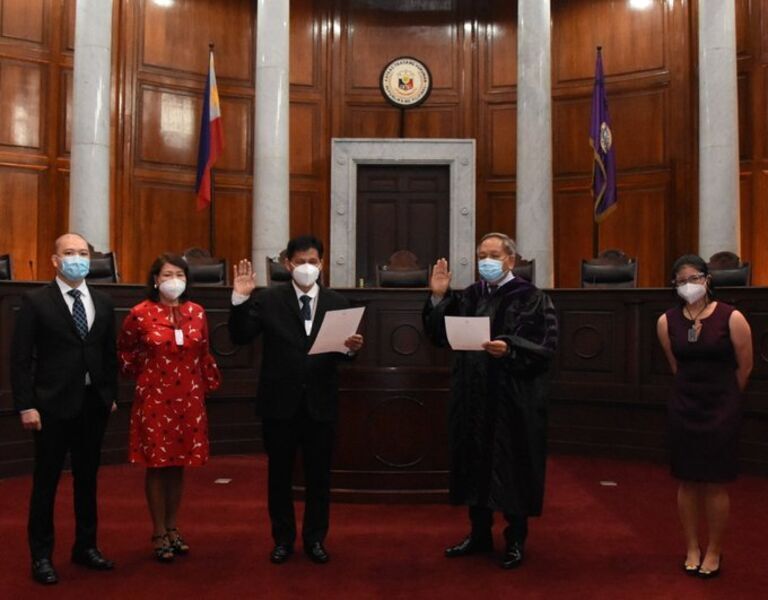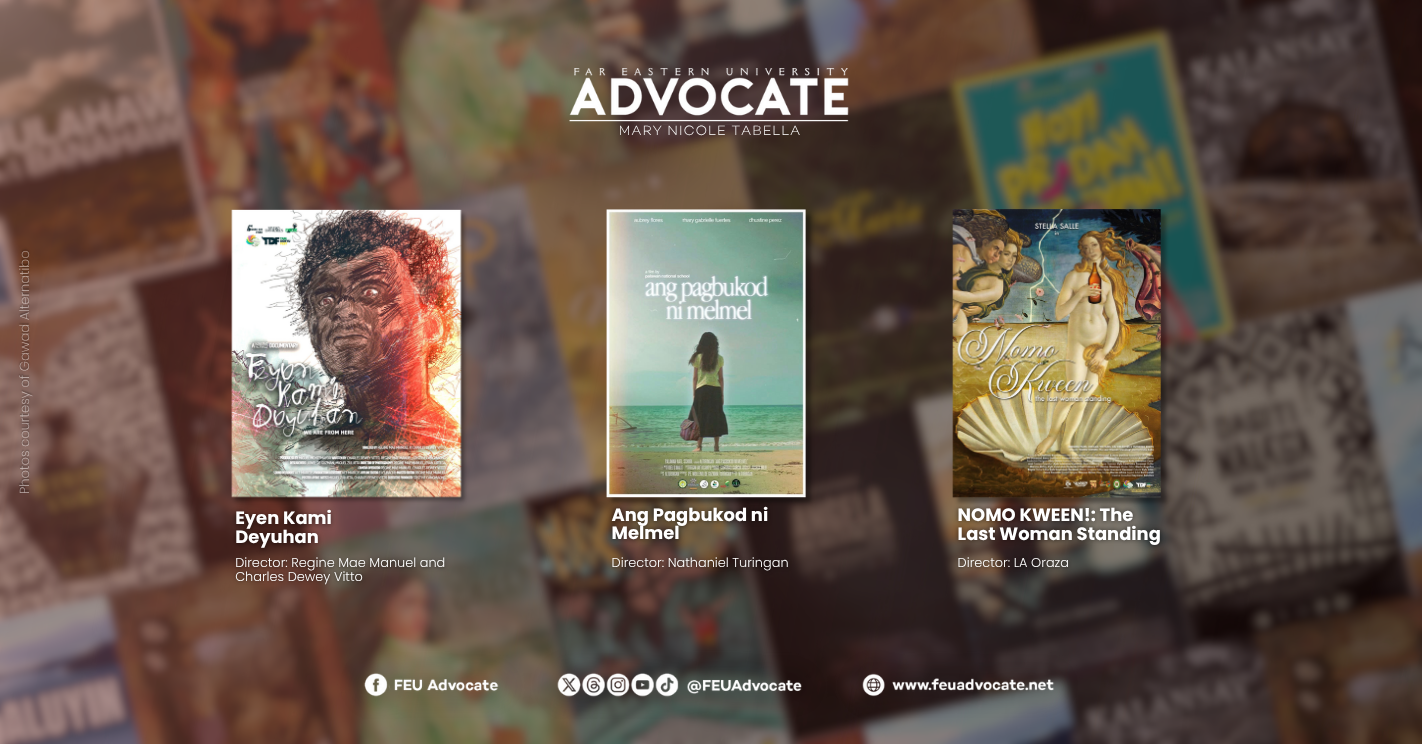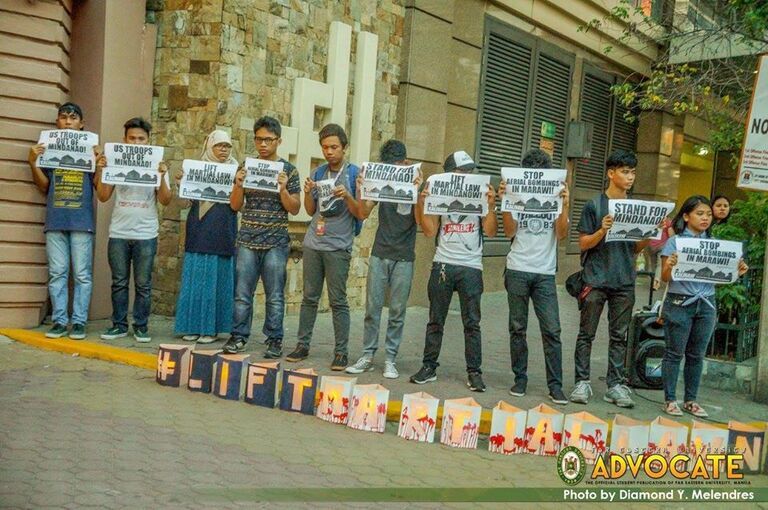FEU dormers fear ‘food shortage’ as Carina floods Manila
- July 24, 2024 17:30
FEU Advocate
July 23, 2020 11:39

The world has come to a complete standstill. A growing number of countries went on lockdown and quarantine protocol was imposed to curb the vicious spread of COVID-19. As a result, it has all the more restrained travelling during this pandemic.
But museums and galleries around the world have risen to these uncertain times and created worldly exhibitions for one’s eyes to feast upon. Digital age has made it possible to quench the need to see new sights and connect one with important historical artifacts and cultural fine arts. Here are five virtual tours of Filipino museums to visit in a blink of an eye from the comfort of your couches.
1. Presidential Museum and Library features legacy of remarkable memorabilia from country’s rich political history.
Found within the walls of Malacañang Palace, Kalayaan Hall is a museum that houses deep heritage of Philippine presidency. It stores historical collection and copies of President Emilio Aguinaldo’s Acta de la Proclamación de la Independencia del Pueblo Filipino (1960) and the executive desk of Manuel L. Quezon, created in 1937 by Vidal Tampingco.
If you visit the virtual tour partnered with Google Arts and Culture, you can explore two online exhibits available to the public: Relics of Power: Remembering Philippine Presidents highlighting art forms and memorabilia in the last 120 years of Philippine governance. The other online exhibit is entitled as Malacañang as Prize, Pulpit and Stage which highlights how the palace is a monumental place for national decision-making histories.
In this Presidential Museum and Library online site, it pays homage and great tribute to our rich history in politics and ultimately traces back to our identity as Filipinos as it features different sculptures of Philippine Presidents, oil portrait of President Quezon, and even medal representing seals of different provinces.
(Sources: Presidential Museum & Library, Google Arts & Culture)
2. Pamintuan Mansion relives the rich and vibrant lives of ordinary people and showcases how every day living has evolved.
Located in Angeles City Pampanga is a special piece of Philippine history, formerly known as the Pamintuan Mansion. The ownership was turned to National Historical Commission of the Philippines (NHCP) and was converted to The Museo ng Kasaysayang Panlipunan ng Pilipinas. This living history museum has witnessed and endured several historical accounts – General Antonio Luna and General MacArthur’s headquarter, celebration of Philippine’s first anniversary of independence, and Japanese kamikaze pilots occupied the place during world war II.
The virtual tour takes us back and provides a glimpse of Filipino social history in the past and today. This mansion was a wedding gift to Florentino, Valentina Torres and Mariano Pamintuan’s son. It is the highest structure in Pampanga where Mt. Arayat can be viewed from a distance. It is the first and only museum that offers a wide spectrum panorama of country’s culture and life. The virtual museum features antique art forms, houses and belongings, clothing, food and utensils.
Its wide array of artifact display, literature, and photographs on social history, the museum truly celebrates Philippine identity and culture.
(Source: National Historical Commission of the Philippines)
3. Filipinas Heritage Library aims to digitize rare book, photo, and music collections focusing on Philippine history.
In the real world, Filipinas Heritage Library is located on the corner of Makati Avenue and Dela Rosa Street. But as they traverse the online world, they complement the museum with their modern approach of digitizing photographs featuring Philippine history.
Within this special library, you will unearth three online exhibitions. Women and War is a beautiful story of resilience and strength among Filipina workers and country’s best warriors. Survivors of the World War II is a series of compelling accounts of Pines Hotel and Baguio during American conquest. Manila Reborn takes you back to the earlier times, the old Manila, through the lens of black-and-white photographs.
(Sources: Filipinas Heritage Library, Google Arts & Culture)
4. Martial Law Museum serves as digital educational resource that promotes engaged citizenship among Filipinos of today.
Ferdinand Marcos-led Martial Law was one of the unforgettable parts of Philippine history. Dictatorship and state censorship were the biggest and greatest threats to press freedom. And if you want to uncover real stories of extreme poverty and famine and narrative accounts of torture and abduction, this virtual tour will interest you. Stories like those who refused to go through the due process and published or written materials subversive to the government were arrested and denied due process.
This virtual museum aims to immortalize the horrors and terrors brought by an authoritative leadership under the unforgettable regime of the late Ferdinand Marcos. It collates an ample and comprehensive set of online resources anchored on 300 reliable references and 100 experts on the field.
Moreover, this digital museum traces back from 1965, the year Marcos was elected as President and the abusive power was cemented, to 1936 when a unified revolution toppled the draconian government.
(Source: Martial Law Museum)
5. FEU as a UNESCO heritage oasis and Art Deco university in the heart of downtown Manila.
In the busy-filled streets of Manila’s university belt, you can find an refuge of artistry and heritage. It is a precious jewel in the middle of chaos. Far Eastern University (FEU) is one of the biggest and largest ensemble of Art Deco complex in the country. Recognized by United Nations Educational, Scientific and Cultural Organization (UNESCO) for its undoubted dedication to cultural conservation and preservation.
In the video tour by Mr. Martin Lopez, Director of FEU Center for the Arts, it featured many of the well-known Philippines visual arts – Botong Francisco’s impeccable Stations of the Cross and Crucifixion at the University Chapel, Amorsolo’s portraits and landscapes, Napoleon Abueva’s Pieta, Manansala’s unique series of outdoor sculptures and the like.
It features the unique artistry of Tamaraw’s abode with paintings and sculptures everywhere celebrating architectural style and striving for modernity.
(Sources: FEU Center for the Arts, philstar.com)
All around the world, many art institutions might have been temporarily closed. However, this does not mean you have lost access to the countless treasures of history and culture.
You might be confined within the walls of your homes, but you can still be at the world’s largest expanse. Now can be a time for you to immerse yourself with significant parts of history and reassess your cultural identity – through a virtual tour of Philippines’ best galleries.
-Ma. Emilia Nicole D. Bertulfo
(Photos courtesy of Presidential Museum and Library/Google Arts & Culture, philstar.com, Filipinas Heritage Library/Google Arts & Culture, Martial Law Museum, FEU Center for the Arts)








